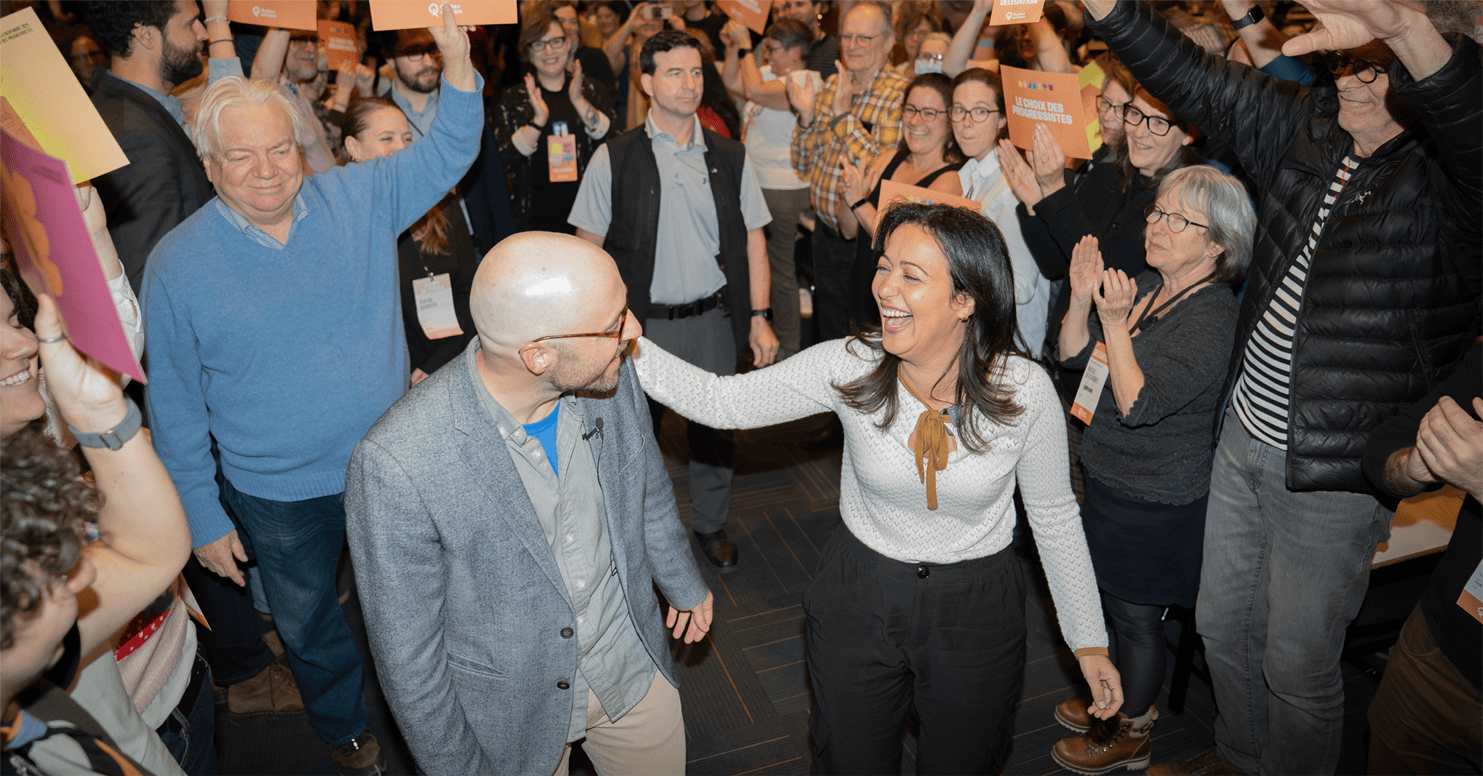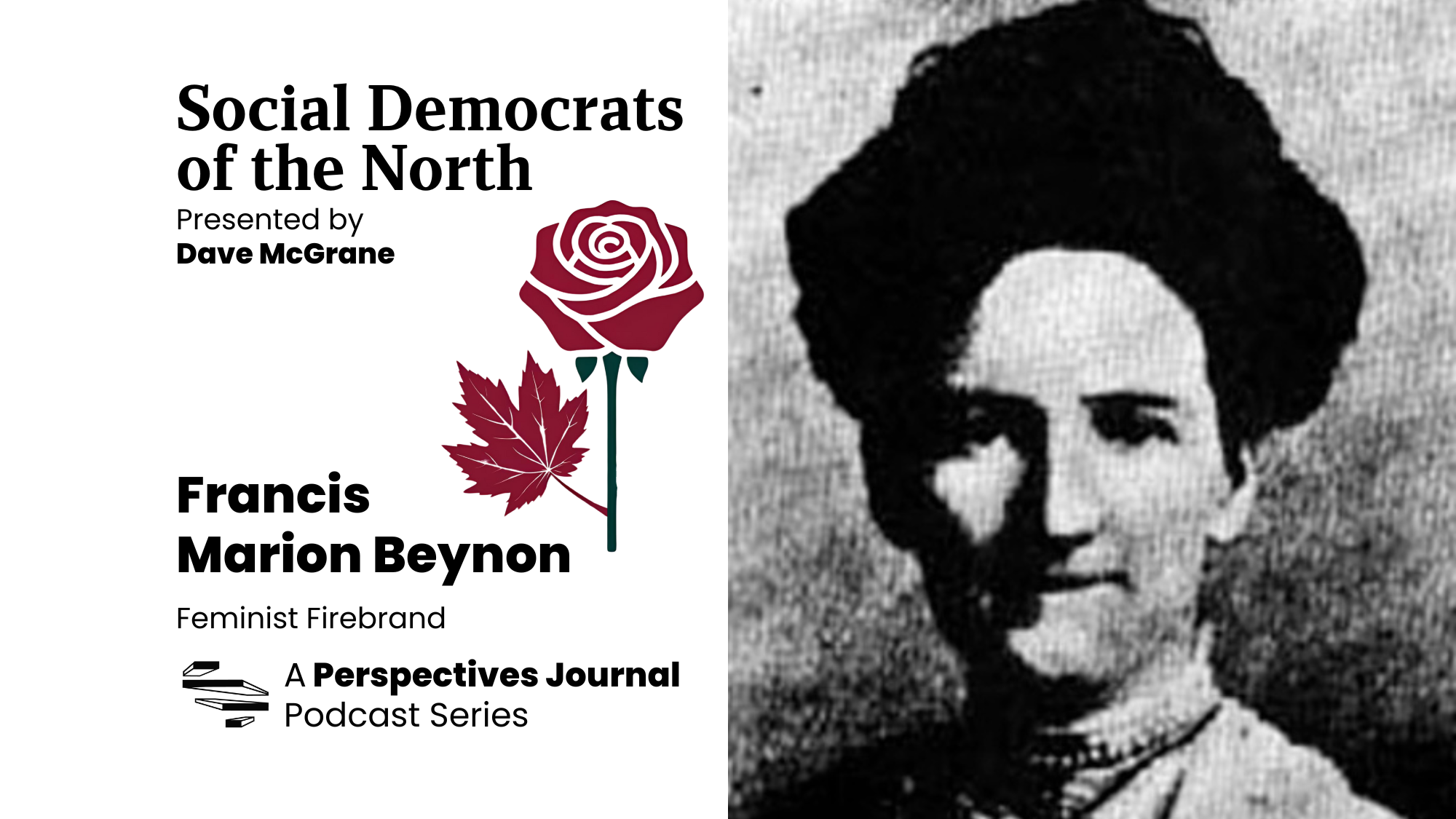In Ontario, the public won control over hydroelectric power in 1910, but the task of democratizing this essential utility and economic staple was not an easy process. It started five years earlier when James Whitney, the Conservative Premier of Ontario, declared that the hydroelectric power of Niagara Falls would never be, “the sport and prey of capitalists”—it belonged to the people who made and used it. The local organizers and municipalities who helped to create Ontario Hydro at the time fought a long campaign against private interests who spent lavishly on newspaper editorials, billboards, and canvassers. These private business interests went to great lengths to acquire Ontario Hydro by attempting to sabotage the province’s credit rating through negative reporting in the international financial press, claiming that public power ran rough-shod over private property rights. Public power was still able to prevail. In 1910, hydroelectric power from Niagara Falls sent affordable electricity to municipalities more than 160 kilometers away. In Berlin, Ontario at the inauguration of the province’s public power—now the City of Kitchener—a string of lights spelled “For the People” over the town’s main street. 1 Despite piecemeal privatization, public power in Ontario still survives to this day.
Local zones of social democracy often exist thanks to the successes of ground-level social movements, like the citizens who organized around a public Ontario Hydro more than a century ago. Public libraries, recreational facilities and cultural spaces are social democracy realized—community wealth as the social infrastructure where many can gather and live in non-transactional spaces. 2 The public ownership of power in Ontario is the result of these organizers banding together across municipalities. Their story serves as inspiration for a model of confident, modern social democracy that prioritizes questions of public power and decommodification at the local level in areas like housing, food, and energy.
The idea of a social democratic zone, however, is a reversal from the decades of practice of carving out “zones” by right-wing governments and neoliberal interests. Zones of this type, such as tax havens, are carved out of otherwise democratic jurisdictions, to test drive the worst impulses of capitalism to subvert labour laws, hold private control over democratic ownership, and expand extraction at the expense of the environment. These practices are realized to attract capital investment while maximizing profit in the shortest turnaround time possible. From these zones, the worst practices of free market capitalism proliferate into ordinary territories, eroding the democratic sovereignty of peoples in favour of the power of capital.
Progressives should consider creating and developing their own “zones” for building democratic power, putting into practice social democratic values. Through these islands of social democracy, the diffusion of democratic power could be incubated and seeded to propagate widely as neoliberal systems wither and fail. The public power of Ontario Hydro seeded a province-wide grid that helped to spur the initial development of industrial democracy in Canada at the start of the 20th century, until at least the rise of neoliberal retrenchments starting in the 1980s. Large municipalities, while often constrained, are also good-sized jurisdictions to create social democratic zones and already have the tools to create bases of public power. Democratic control over public goods and essentials such as housing and groceries could demonstrate what a muscular cost-of-living strategy can achieve at-scale, especially in the face of multiple economic and political crises. The several Ontario municipalities worked together to create a public power system that could serve as inspiration for today’s zones of social democracy.
The Politics of the Zone
A zone, according to historian Quinn Slobodian, “at its most basic, [is] an enclave carved out of a nation and freed from ordinary forms of regulation.” It is a libertarian project of subverting democratic control and sovereignty in the interests of capital by poking holes in states to create zones within them (i.e. the special economic zone, the export-processing zone, the foreign trade zone or the euphemistic innovation hub, etc.), where normal rules don’t apply. Private investors call the shots without democratic accountability in these zones. “Crack-up capitalists,” as described by Slobodian, “spot signs of the mutation of the social contract and ask whether they could accelerate and profit from the dynamics of dissolution,” through the fragmentation of democracy and replacement by capital rule. 3
In opposition to the capitalist zones that have been built up today, the left should build inverted zones, according to Mathew Lawrence, director of the think tank Common Wealth, with “the suspension of market rule in place of a social economy, of the sovereignty of producers over production, and of democratic control over investment to meet collective and environmental needs and expand human capability and freedom.” 4 There are, however, limits to creating islands of socialism. First, left-wing versions of the zone are often defensive and restricted to a community or a project. Second, contrary to the right-wing politics of exit, the left seeks a system-wide transformation that zones alone are incapable of achieving. Left zones must build strength collectively and always be aimed at scale. Much like the Ontario municipalities who worked together to create public energy, local successes must vie for a greater transformation of power relations.
Canada has a history of accomplishing these islands of social democracy. In the twentieth century, Connaught Laboratories used the resources of a local anchor institution, the University of Toronto, to produce groundbreaking innovations to treat diphtheria, host Frederick Banting’s historic insulin research and make pivotal contributions in the fight against polio. Connaught founder Dr. John Fitzgerald is considered one of the foremost champions of public health alongside political left-wing icons like Tommy Douglas. Dr. Fitzgerald advanced the commonsense idea that life-saving drugs should be universally provided, and that a public system should be the vehicle. 5 He pushed the ideal forward and ensured Connaught’s outputs remained in the public domain, before it was sold to the Canadian Development Corporation in 1972, later to be privatized in 1986. Pharmacare has since made considerable headway but has yet to fully realize its potential. Before its ill-advised sell-off, Connaught demonstrated that local experimentation at the fringes can precede transformative change at scale, and it only took the rising tide of neoliberalism of the latter twentieth century to erode this transformative institution.
Large municipalities, while often constrained, are strong administrators of zones, as evidenced by the capitalist zones of Hong Kong, Singapore and the City of London. For the left, big cities have the geographical density and the administrative tools to create democratic bases of public power.
Local Public Enterprise at a Glance
Municipalities are proven service providers and there are hundreds of municipal enterprises in Canada. 6 Municipally-owned corporations tend to appear in larger cities, but can also appear regionally and service several municipalities. Their services focus on protecting, maintaining, and enhancing the built environment, but may branch out into areas such as immigrant settlement, poverty reduction, and climate change, their capacity is restricted by their geographical and jurisdictional limitations and reliance on property-based taxes and fees. 7
Three major Canadian municipalities, Calgary, Saskatoon, and Toronto, operate electrical utilities; and five cities, including Vancouver, Calgary, Winnipeg, Toronto, and Montréal, are directly involved in social housing, though other municipalities may be involved in the financing and construction of new affordable housing units. Larger cities tend to host more municipally-owned enterprises because of their population size, owing to a larger tax base, and have a much more developed organizational scale, scope, and sophistication. Larger cities typically provide operationally intensive services or handle bigger administrative revenues through public parking lots, public transit, and social housing. Some of these operations are massive public enterprises, like the Toronto Transit Commission, which currently maintains a 2025 operating budget of $2.8 billion. 8
Cities also often host other large “anchors”: public institutions that may be operated by other jurisdictional levels, but are rooted in their communities, like hospitals and universities. Anchors are economic and innovation engines, and are often endowed with wider social mandates and advanced services like health or education. They often are among the most significant employers and buyers in their jurisdiction. In 2022-23, Canadian universities spent $45.1 billion; Canadian hospitals, excluding Québec and Nunavut, spent $62.4 billion on goods and services. 9 As large public service employers, they also have a say over how a workforce is trained and who it employs—playing an important countercyclical role while opening themselves to broader roles in regional industrial strategies. 10
While the University of Toronto made medical breakthroughs by supporting a non-profit enterprise like Connaught Labs, as a large public enterprise, it could also create demand certainty for municipal, co-operative enterprises, unionized workplaces or Black and Indigenous-owned businesses. They can attract talent, create new ventures, and encourage the creation of neighborhood development by building public goods like parks. 11 Anchor institutions could also play a role in creating community energy co-operatives, acting as a public partner with local groups of citizen’s associations to install solar panels and reinvesting the surplus in democratically determined initiatives. 12 Such community wealth building initiatives have attracted greater attention over the past decade and deserve greater consideration as Canadian progressives face a new era of right-wing governance.
There are, nonetheless, limits to the left politics of the zone. First, many of these initiatives could be best accomplished at scale with the cooperation and fiscal power of senior levels of government. However, in demonstrating the successful implementation of municipal projects, as is often the case where local administration is better equipped to tackle public enterprise such as non-market housing, senior government investment should typically invest in community initiatives wherever there is demand and viability. Canadian municipalities, which are beholden to their respective provincial governments, are typically fiscally constrained by the revenue tools they are able to employ. Meanwhile, federal and provincial governments, with their broader tax and fiscal powers, maintain authority over municipal budgets. Ongoing municipal struggles to secure operational transit funding over “de-risking strategies” that enable public-private transit partnerships are exemplary of this limitation. 13
Still, these fiscal limitations can be mitigated given the outsized influence of larger Canadian cities on the political prospects of provincial and federal governments. The Ontario-Toronto New Deal Agreement in 2023 that saw the restoration of transit operational funding between the city and the province shows that political will can be used to extract concessions towards social democratic zoning projects by large cities. 14 This challenge need not be a barrier to ambitious policy interventions that lower the cost-of-living. Municipal grocers are one area where such an approach could bear real fruit.
Case Study: Municipal Grocers
Municipally-run grocery stores are riding a wave of attention. They have become a rallying cry for progressive municipal politicians like Zohran Mamdani, democratic socialist candidate for Mayor of New York City, and Chicago Mayor Brandon Taylor. At the municipal level, these progressive politicians argue that cities can forgo property taxes on municipally-owned grocery stores and use wholesale purchasing strategies to undercut for-profit grocery chains that are prime suspects for abusing sellers’ inflation. 15 In Canada, publicly-owned grocery retailers have the potential to exert downward pressure on the prices of private grocers by competing against incumbents in a highly-concentrated industry, much like SaskTel, as a crown corporation telecom, has the displacement effect of lowering telecom prices in the province of Saskatchewan.
In 2023, the Competition Bureau sounded the alarm over the big five grocery retail chains—Loblaws; Sobeys; Metro; Costco; and Walmart—and encouraged the entry of new retailers, “that are willing to take risks to shake things up.” 16 The Bureau envisioned independent, international and discount grocers entering the market, and only a limited role for municipalities to loosen property laws and make it easier for new stores to open. 17 While new retail entries into Canada’s groceries sector could provide disruption (though previously attempted with retailers like Target), democratically controlled enterprises cannot be overlooked. Municipalities could play a greater role and build collective strength by delivering material benefits to residents through cheaper groceries.
There is a clear social need: prices are climbing as food remains vulnerable to supply shocks, including tariffs and climate change. 18 In January 2025, the City of Kingston reported that one-in-three households were food insecure, becoming the third city in Ontario after Toronto and Mississauga to declare a food insecurity emergency. 19 In 2023, 22.9 percent of people across the ten provinces lived in a food-insecure household—8.7 million people, including 2.1 million children. 20 Downtown Winnipeg and southwest Scarborough are exemplary urban communities where food desertification is a major problem for their nominally low-income residents. 21
Grocery price inflation is also top of the list of financial anxiety for Canadians. 22 Greater social assistance is useful in the short-term to make up for acute food insecurity, but the fiscal capacity required for this kind of programming has been typically opposed by right-wing provincial and federal governments. Likewise, food banks provide much-needed relief, but are not designed to address the structural issues behind food insecurity. Already, there are examples of non-profit social enterprises in food security, like co-operatives or Québec’s solidaristic grocery stores that charge customers different prices, depending on their ability to pay. 23 Given the needs and the already existing models for non-market alternatives and decommodification, it is not so much an ambitious dream to pursue municipally-owned grocery retail to decommodify this essential for those that need it, and build a zone of social democracy from there.
Municipally-run grocers are also not radical or untested. Several examples of municipalities around the world have opened them using a variety of strategies. A common motivator behind the development of a municipal grocer is the failure of private grocers and the threat of food desertification as a result of their closure in low-income communities. Since 1985, the residents of St. Paul, Kansas, a small community of 600, have had to make a 34 mile round trip to buy groceries. The municipality, a community development corporation and a rural electric cooperative teamed up to create a homegrown grocer, hiring a husband and wife to run it. The city bought out its partners in 2013 when the couple retired and ran the supermarket at a profit. 24 Not all municipally-owned grocers, however, succeed. For Instance, the town of Baldwin, Florida tried to open a true non-profit grocery for its community of 1,400 people but had to shutter the operation because its single store struggled to buy wholesale prices and sell at competitive prices. 25
These examples show that municipally-run projects thrive or die by the business model. However, some exemplary business failure should not lead to the dismissal of creating this particular zone of social democracy. Matt Bruenig of the think tank the People’s Policy Project suggests using the criteria that Norway applies to its state-owned enterprises, splitting them between those aiming for the highest possible return and those seeking the most efficient attainment of public policy goals. While financial performance is relevant, much like public transit which typically require subsidies to complement farebox revenues, for public grocers it does not necessarily need to be judged by a positive cash flow if it is meeting its democratically-determined social goals as efficiently as possible. 26 Efficiency, married with committed support from key partners like a large hospital or university, could make these projects a success. There is a wealth of experimentation and evidence to draw from to create an informed local approach to the food insecurity crisis facing Canadians.
That extends to the already considerable public presence in food and beverage retail. In Ontario, the LCBO is not subsidized by the provincial government and generates about $2.5 billion in provincial revenues each year, with its 680 retail outlets accounting for about 80 percent of its sales. 27 These proceeds help provide public goods for Ontarians, rather than the handful of grocery chains that dominate Canadian food retail. OPSEU, LCBO’s union, also points out that this democratic oversight serves the broader public interest. Ontarians are 12 times more likely to trust the LCBO over private retailers to refuse service to children. 28 Likewise, research has associated greater alcohol access via private vendors with more alcohol-related visits to the emergency room. 29 While the LCBO does not have the same mandate to deliver low-cost groceries or ensure access in food deserts, it is a profitable public enterprise that responds to a wider set of public interests, such as the recent pulling of American products in response to the US Tariff threat. Meanwhile, Canada’s major grocers still maintain American products on their shelves.
The LCBO’s expertise demonstrates the success of public retail and reveals it can be leveraged for municipal grocers. Indeed, public ownership exists in significant parts of the food supply chain. Run by the Ontario Ministry of Agriculture, Food and Rural Affairs, the Ontario Food Terminal is Canada’s largest wholesale Fruit and Produce Terminal and measures in the top four terminal markets in Canada and the United States by volume of produce distributed. An average of 5.6 million pounds of fruits, produce and other products are distributed daily from the terminal, with a range as far as British Columbia and Newfoundland. 30 Municipal grocers are not some fantasy: public ownership exists today in large parts of the food and beverage supply chain. Turning this expertise toward social need requires political will and is a clear option for progressives at the local level seeking to build collective power by delivering material goods where they are needed most.
This context—whether it’s successful campaigns of economic democratization or existing public infrastructure that can be leveraged to benefit social needs—shows that there is nothing radical or unimaginable about the decommodification of basic food sources.
While market radicals fantasize about exiting from stultifying bureaucracies, Slobodian rightly notes the zones are bound to the states that create them. Moreso, they are embedded with real people and history. 31 Much like the right-wing version of the zone, the left-wing iteration of the zone needs to work through and with existing institutions for the goals of justice and equality. Anchor institutions like the University of Toronto’s support for Connaught Labs, campaigns like the push for public power in Ontario’s industrial history, or the existing public demand and opportunity for good food at low cost, all demonstrate the feasibility of a democratic economy that builds public power.
Conclusion
To develop municipal grocers in Canada arguably helps to develop zones of social democracy and carve out spaces for public power that can then seep into other sectors of the economy. Today, crack-up capitalism creates zones where capital rules, but public enterprise can reverse this by modeling the mechanisms used to make spaces where capital power thrives over democratic power and develop the institutions to deliver popular wellbeing at scale. Like the Ontario municipal politicians and organizers who worked together to create public power more than a century ago, a project to develop municipal grocers can work with other varieties of social enterprises, like co-operatives or Québec’s solidaristic grocery stores. 32 Like Connaught Labs, they may benefit from the partnership and resources of anchor institutions. The binding thread between all these projects is that local democracy is a platform for the collective power of those who work and live in a community over those who profit from it. Grassroots campaigns in local governments prove we have the capacity to create economic democracy wherever social need is poorly met, and to use those conditions to build power at ever greater scales.
Notes
- L. McQuaig (2019) The Sport and Prey of Capitalists, Dundurn, Toronto. ↩︎
- D. Gregory (6 May 2019) “Skittled Out? The collapse and revival of England’s social infrastructure,” Local Trust. Available online. ↩︎
- Q. Slobodian (2023) Crack-Up Capitalism: Market Radicals and the Dream of a World Without Democracy, Metropolitan, New York. ↩︎
- M. Lawrence (12 May 2023) “Making democracy safe from capitalism,” New Statesman. Available online. ↩︎
- McQuaig, The Sport and Prey of Capitalists, 2019. ↩︎
- D. Crisan & K. McKenzie (February 2013) “Government-owned Entreprises in Canada,” University of Calgary School of Public Policy, SPP Research Papers, 6(8). Available online. ↩︎
- J. Lyons, Z. Spicer & D. Taylor, (2023) “Municipally Owned Corporations in Canada,” in Corporatisation in Local Government: Context Evidence and Perspectives from 19 Countries, eds. M Van Genugten, B. Voorn, R. Andrews, et. al., Palgrave Macmillan. ↩︎
- Toronto Transit Commission (16 January 2025) 2025 Operating Budget and 2025-2034 Capital Budget & Plan Briefing to Budget Committee. Available online. ↩︎
- Statistics Canada (7 July 2024) Continuing improvement in university finances, 2022/2023. Available online; Canadian Institute for Health Information (7 November 2024) National health expenditure trends. Available online. ↩︎
- N. Djuricic (August 2015) “Anchor Institutions”, The Prospoerous Province: Strategies for Community Wealth, Mowat Centre/Atkinson Foundation. Available online; P. Harker, D. Diamond & D. Reed (September 2022) “Anchor Impact: Understanding the Role of Higher Education and Hospitals in Regional Economies”, Report, Federal Reserve Bank of Philadelphia. Available online. ↩︎
- Harker, Diamond & Reed, Philadelphia Federal Reserve Bank, February 2022. ↩︎
- N. Pearce (26 April 2024) Plug-in Public Power: The Case for Community Energy Democracy, Report, Common Wealth. Available online. ↩︎
- N. Wallace (2024) “One foot in, one foot out: The Trudeau record on infrastucture and public transit,” in The Trudeau Record: Promise v. Performance, eds. K. Scott, L. Macdonald & S. Trew, Lorimer Books, Toronto, pp. 104-118. ↩︎
- Ontario Ministry of Finance & City of Toronto (26 November 2023) Toronto-Ontario New Deal, Term Sheet, Toronto-Ontario New Deal Working Group. Available online. ↩︎
- 11. E. Fitzsimmons (12 December 2024) “N.Y.C. Grocery Prices Are High. Could City-Owned Stores Help?” New York Times. Available online. ↩︎
- Competition Bureau Canada (27 June 2023) Competition Bureau Retail Grocery Market Study Report, Government of Canada. Available online. ↩︎
- Ibid. ↩︎
- A. Heydari (5 December 2024) “Food prices could jump by up to 5% in 2025, and researchers say loonie is partly to blame,” CBC News. Available online. ↩︎
- D. Taekema (20 January 2025) “Kingston, Ont., declares emergency as roughly 1 in 3 households struggle with food insecurity,” CBC News. Available online. ↩︎
- PROOF, Food Insecurity Policy Research (26 April 2024) “New data on household food insecurity in 2023,” News Release, University of Toronto. Availability online. ↩︎
- J. Slater, EK Stefan, et. al. (October 2017) “Food deserts in Winnipeg, Canada: a novel method for measuring a complex and contested construct,” Health Promot Chronic Dis Prev Can; 37(10):350-356. Available online; T. Yazdani (4 August 2023) “Scarborough neighbourhood becomes food desert after closure of grocery stores,” CityNews. Available online. ↩︎
- D. Reevely (12 November 2024) “Food prices top Canadians’ financial anxieties,” The Logic. Available online. ↩︎
- M. Alexander & W. Thorhaug (16 September 2024) “Support zero-profit grocery stores to fight market failure in the food supply chain,” The Hill Times. Available online. ↩︎
- J. Pattison-Gordon (10 January 2025) “Should Cities Open Their Own Grocery Stores?” Governing, e.Republic. Available online. ↩︎
- Ibid. ↩︎
- M. Bruenig (28 October 2023) “Chicago Is Considering Opening a Municipal Grocery Store,” Jacobin Magazine. Available online. ↩︎
- M. Crawley (11 July 2024) “How the LCBO makes money for the Ontario government,” CBC News. Available online. ↩︎
- Ontario Public Service Employees Union (October 2018) Ontarians share concern about marijuana being sold to minors – see LCBO as best at controlling sales to minors, Report, Nanos Research. Available online. ↩︎
- D. Myran, J. Chen, N. Giesbrecht & V Rees (July 2019) “The association between alcohol access and alcohol-attributable emergency department visits in Ontario, Canada,” Addiction;114(7):1183-1191. Available online. ↩︎
- _. (2025) About Us, Website, Ontario Food Terminal Board. Available online. ↩︎
- Slobodian, Crack-Up Capitalism, pp. 236. ↩︎
- Alexander & Thorhaug, “Zero-profit grocery stores,” The Hill Times. ↩︎








